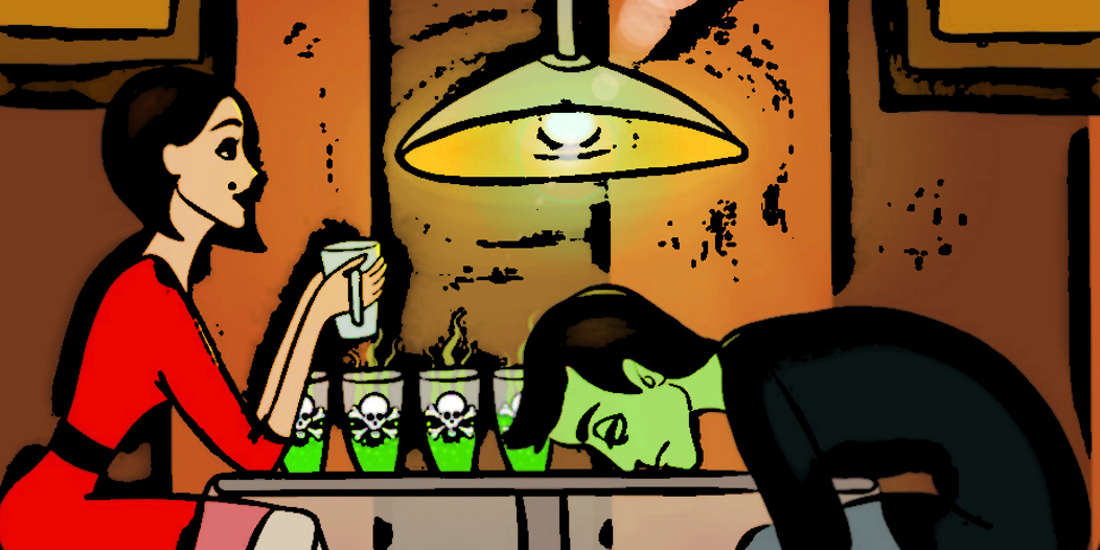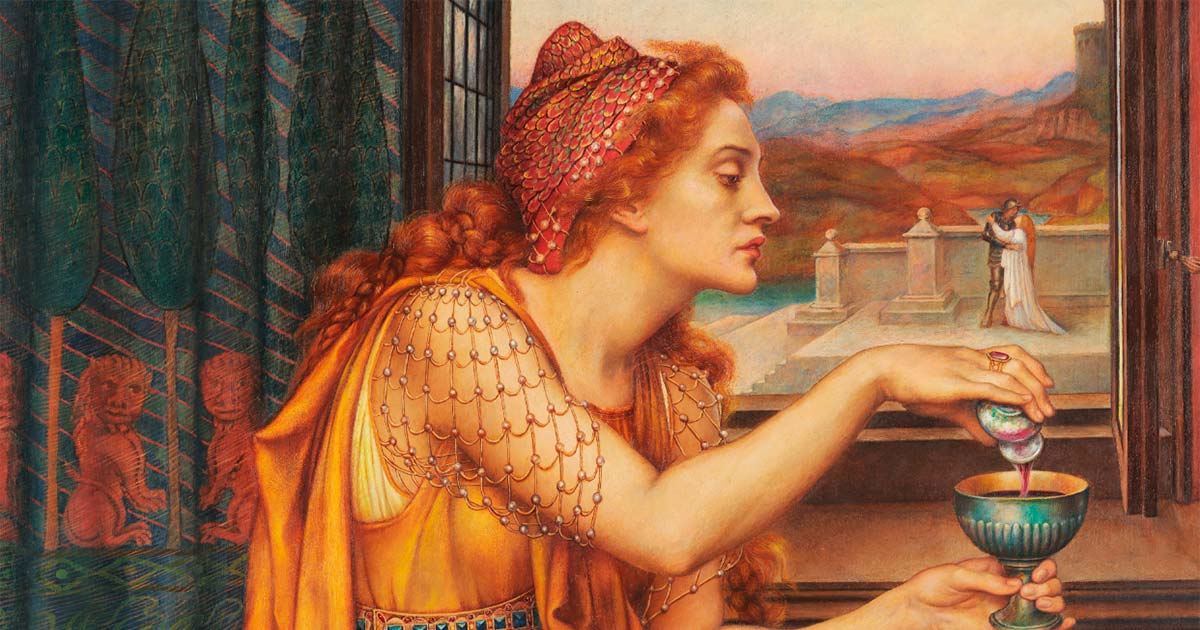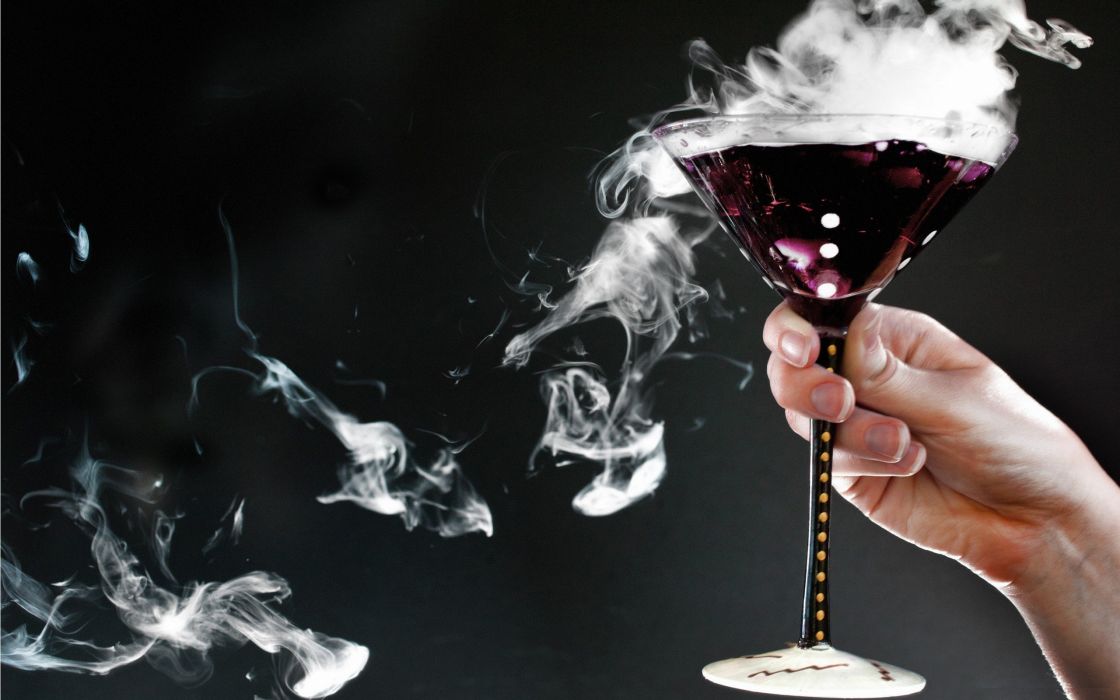Mithridatism is the practice of attempting to protect the body against poisoning by deliberately consuming very small, non-lethal amounts of toxic substances over a long period of time. The idea behind it is simple but dangerous: by exposing the body repeatedly to a poison in controlled doses, a person might gradually develop resistance or tolerance to its effects. The term itself comes from the historical figure Mithridates VI, the ancient King of Pontus, whose life and paranoia around poisoning shaped one of the most famous stories connected to this practice
According to historical accounts, Mithridates VI lived in constant fear of assassination by poison, a fear rooted deeply in his own family history. His father, Mithridates V, was reportedly murdered through poisoning, an act that some sources attribute to the involvement or approval of his wife. After the king’s death, Mithridates VI’s mother ruled Pontus as regent until her sons reached adulthood. During this period, Mithridates VI found himself competing with his brother for power, while his mother increasingly favored the other heir.
As a young man, Mithridates VI began to suspect that his meals were being tampered with. Chronic stomach pains after eating made him believe that small quantities of poison were being added to his food in an attempt to kill him slowly without raising suspicion. Convinced that his own mother might be behind these attempts, and fearing further plots, he eventually fled the royal court and escaped into the wilderness.
While living away from the palace, legend claims that Mithridates VI took a radical approach to survival. He began deliberately ingesting minute, carefully measured amounts of various poisons, ensuring they were not strong enough to kill him. Over time, he is said to have combined these substances into a complex mixture often described as a universal antidote, designed to protect him against all known poisons. Whether this formula truly worked as intended remains uncertain, but the story cemented his reputation as a ruler obsessed with chemical immunity.
After Mithridates VI eventually died, interest in his methods did not disappear. Roman physicians later claimed that they possessed versions of his anti-poison formula and even attempted to refine it further. These practices were consistent with the medical beliefs of the era, which often blended physical remedies with spiritual or ritual elements. In Mithridates’ case, his routines reportedly included religious supervision carried out by the Agari, a group of Scythian shamans believed to descend from Indian Aghoris. These figures were said to accompany him constantly, reinforcing the idea that protection against poison involved both the body and the spiritual realm.

Centuries later, the concept of mithridatism continued to appear in historical speculation and folklore. One frequently mentioned example is the Russian mystic Rasputin. Some writers have suggested that his survival during an alleged poisoning attempt was the result of prior exposure to toxins that made him resistant. However, no reliable evidence confirms that mithridatism played any role in his case, and the claim remains largely speculative.
Ancient Indian texts and legends also reference practices similar to mithridatism. During the reign of King Chandragupta Maurya in the late fourth century BC, stories describe a method in which young women were gradually exposed to small doses of poison from childhood. These women, known as vishakanyas, were believed to become immune to toxins as they matured. The legend held that intimacy with a vishakanya could be fatal to others, making them living weapons used to eliminate political enemies.
Another dramatic story appears in Jain historical texts describing the birth of Emperor Bindusara, the son of Chandragupta Maurya. According to this account, Chandragupta’s advisor Chanakya routinely administered small amounts of poison to the emperor to build resistance against assassination attempts. One day, unaware of this practice, Chandragupta shared his meal with his pregnant wife, Queen Durdhara. Because she had not developed immunity, the poison caused her to collapse and die almost instantly. Chanakya intervened immediately, cutting open her body to save the unborn child. A drop of poison touched the baby’s head, leaving a permanent bluish mark, or bindu, which later gave Bindusara his name.
These stories, whether fully factual or partly mythological, illustrate how deeply the idea of poison immunity has been embedded in human history. Across cultures, rulers and strategists imagined that gradual exposure could transform one of the deadliest threats into a form of protection, even if the true biological limits of such practices were not yet understood.
Practical reality and biological limits
The historical stories surrounding mithridatism often sound convincing, but the real-world application of this practice is far more complex and limited than legends suggest. From a biological standpoint, developing immunity to poison is not universally possible. Whether tolerance can form depends heavily on the type of toxin involved and how the human body processes it
True immunity is generally only achievable with biologically complex substances that the immune system can recognize and adapt to. In such cases, repeated exposure may lead to a controlled immune response. However, many poisons do not operate through immune pathways at all. Instead, they interfere directly with chemical processes inside cells, making immune adaptation ineffective.
Another mechanism sometimes confused with immunity is metabolic tolerance. This occurs when the liver increases production of specific enzymes that break down a toxin more efficiently. Alcohol is a well-known example. With repeated exposure, the liver becomes more efficient at metabolizing it, reducing its immediate effects. However, this adaptation is not harmless. Increased metabolism often results in toxic byproducts accumulating in the liver, gradually damaging tissue and leading to conditions such as fatty liver disease or cirrhosis.
Because of this, metabolic tolerance is unreliable and dangerous. While a person may feel less affected by a substance, internal damage may still be occurring silently. In many cases, tolerance masks harm rather than preventing it.
Some toxins behave differently and cannot be adapted to at all. Substances such as hydrofluoric acid or many heavy metals either cause severe damage regardless of dose or accumulate in the body over time. Repeated low-level exposure does not build protection but instead leads to long-term toxicity. In these cases, mithridatism is not just ineffective, it is potentially fatal.
Arsenic is often cited as an unusual exception. Certain populations have developed genetic adaptations that allow them to tolerate higher levels of arsenic exposure without immediate harm. This resistance is not universal and depends on specific metabolic traits. In theory, limited arsenic tolerance can be mimicked through controlled exposure, but the margin between adaptation and poisoning is extremely narrow, making the practice highly dangerous.
Simple chemical poisons that bypass immune mechanisms present another major limitation. Cyanide is a well-known example. It disrupts cellular respiration by blocking oxygen use at the mitochondrial level. The immune system cannot counteract this directly. However, the human body does possess an enzyme called rhodanese, which can convert small amounts of cyanide into a less toxic compound known as thiocyanate.
This natural process explains why humans can survive trace amounts of cyanide found in certain foods like apple seeds or from environmental exposure such as smoke inhalation. Still, this does not mean true tolerance can be developed. The conversion process requires sulfur-containing compounds, which are limited in supply. Larger doses of cyanide quickly overwhelm the system, making it extremely lethal despite this partial metabolic pathway.
Because of these constraints, mithridatism has very few practical applications. Even in cases where partial tolerance is possible, the risks are substantial and unpredictable. One modern figure often cited is Bill Haast, a venomous snake handler who reportedly injected himself with diluted snake venom over many years. While he claimed this practice helped him survive multiple bites, such cases are rare and medically controversial.
Similar stories exist among snake handlers in parts of Burma, where individuals are said to tattoo venom beneath their skin. These practices are based on tradition rather than controlled scientific evidence, and outcomes vary widely. What works for one individual may be fatal for another.
Overall, while mithridatism occupies a fascinating place in history and mythology, its effectiveness in practice is limited, highly specific, and often misunderstood. The human body has remarkable adaptive abilities, but poison immunity is far from universal, and deliberate exposure remains an extremely risky path with few real-world benefits.
Rare cases, misconceptions, and modern interpretation
Despite the long history and dramatic stories surrounding mithridatism, modern science views most claims of poison immunity with strong skepticism. Many examples cited over the centuries blur the line between true physiological adaptation and misunderstanding, coincidence, or outright myth. What appears to be immunity is often something far more limited, temporary, or dangerous than it seems
One common misconception is confusing reduced symptoms with actual protection. When a person is repeatedly exposed to a toxin, the body may become less responsive to its immediate effects. This does not mean the poison has become harmless. In many cases, the substance continues to damage organs quietly, while outward signs diminish. This phenomenon creates the illusion of immunity, even as long-term harm accumulates.
Another misunderstanding comes from confusing venom resistance with poison immunity. Venoms, such as those from snakes, are biologically complex mixtures of proteins and enzymes. In some cases, repeated low-dose exposure can stimulate antibody production, offering partial protection. Even then, this resistance is highly specific. Protection against one snake’s venom does not extend to another species, and dosage errors can still be fatal.
This distinction is critical. Poisons like heavy metals, industrial chemicals, or synthetic toxins do not behave like venoms. They interfere with cellular chemistry, enzyme function, or DNA directly. No amount of gradual exposure trains the immune system to neutralize them safely. Instead, they accumulate or cause progressive damage until symptoms become unavoidable.
Historical accounts often exaggerate success while ignoring failures. Those who died attempting mithridatism rarely became part of the legend. Survivors, especially powerful rulers or mystics, were remembered and mythologized. Over time, stories grew more dramatic, reinforcing the belief that poison immunity was attainable with discipline and courage.
Modern toxicology does acknowledge limited adaptive mechanisms. Enzyme induction in the liver, antibody formation against certain proteins, and genetic variations in metabolism all influence how individuals respond to toxins. However, these mechanisms are narrow in scope and offer no general protection against poisoning. In controlled medical settings, exposure therapy and tolerance studies are conducted with extreme caution, strict monitoring, and clear therapeutic goals. None resemble historical mithridatism in practice.
Today, the concept survives mainly in academic discussion, historical analysis, and popular culture. It serves as a reminder of how humans have long tried to outwit invisible threats using observation, experimentation, and belief, often without understanding the underlying biology. While the idea of training the body to resist poison is compelling, modern evidence shows that true poison immunity is rare, specific, and often misunderstood.
Rather than a practical survival strategy, mithridatism now stands as a cautionary example of the limits of human adaptation. It highlights the difference between tolerance and safety, between myth and measurable protection, and between historical ingenuity and biological reality.




